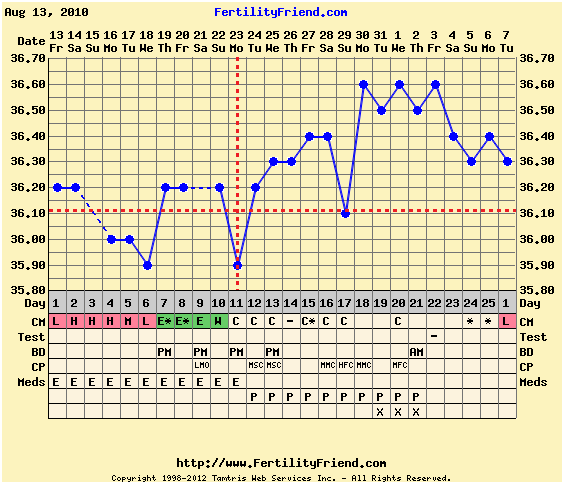When they told me about the so-called temperature measuring method upon waking up in the morning, I thought it was crazy! Most gynecologists don’t even mention this possibility for learning about our bodies. But it is very effective, as long as it’s done correctly. What is this really about?
What is Basal Temperature Measurement
This still little-known method1 consists of checking your temperature through the mouth or vagina with a thermometer upon waking, without getting out of bed, moving as little as possible and, preferably, always at the same time. The basal temperature will indicate your ovulation period.
How to Measure Basal Temperature
It is advised to measure the temperature through the vagina, since it’s a more reliable place for a more precise result, considering we might sometimes sleep with our mouth open and alter the outcome. “But why all this?”, you must be wondering. Hold on, I’ll explain:
Our body goes through several hormonal phases throughout a menstrual cycle. In the first phase, when menstruation ends, estrogen takes control, and its function is to make the egg start the process of maturing, so to speak.
In the second phase, progesterone2 is responsible for maintaining the endometrium so that it is able to receive the zygote (fertilized egg) and provide the conditions to fix in the uterus. Estrogen3 makes our temperature lower, and as ovulation approaches, it tends to fall even more.
Progesterone, on the other hand, causes the temperature to be higher, so those who monitor daily clearly notice the ovulation period, and, in my case, even pregnancy! This is my own basal chart from before I became pregnant.
Sample Basal Chart
You can see from this chart that the temperature before ovulation remains low to medium, and when the chart marks the dotted line, it begins to rise noticeably. Then we know ovulation has already happened, because progesterone has just increased for endometrial maintenance.
The downward spike you see in the chart is usually where estrogen peaks, and from there we can assume the egg will soon be released, between 12 to 48 hours. This is the chart where the ovulation day is clearly shown, and after the period when my period would usually come, I was able to take the test and confirm the pregnancy.
Websites for Basal Temperature Calculation
There are some websites that do this calculation automatically. All we need to do is measure correctly in the morning with at least 5 hours of uninterrupted sleep. Here are two that I personally used and recommend.
- http://www.fertilityfriend.com/home
- http://www.mamanandco.com.pt/ovulacao/grafico-temperatura-basal.php
Over time, you learn the pattern your body shows. In my case, my temperature before ovulation never went above 35.4, and after ovulation, it rose just a little: up to 35.9 or 36.2, at most. But when pregnancy happened, that pattern increased to 36.6, indicating a significant rise in progesterone and suggesting pregnancy.
The LH peak will coincide with the chart’s drop, so you can optimize your chance to get pregnant. And remember: this method requires discipline and patience during the first cycles because learning comes with time. Good luck!
Readers’ Questions:
How can I tell if I’m pregnant using basal temperature?
No method for detecting pregnancy is as reliable as a pregnancy test, but you can notice “something different” through temperature. If even after 18 days past ovulation your basal temperature remains high, this may be an indicator of pregnancy.
What is the basal temperature during ovulation?
Temperature is very personal and can vary from woman to woman, so there isn’t a set standard. Usually, during ovulation, the temperature tends to drop by 0.5 to 2 degrees, increasing when ovulation is over.
Also see: When Does the Ovulation Period Occur?













